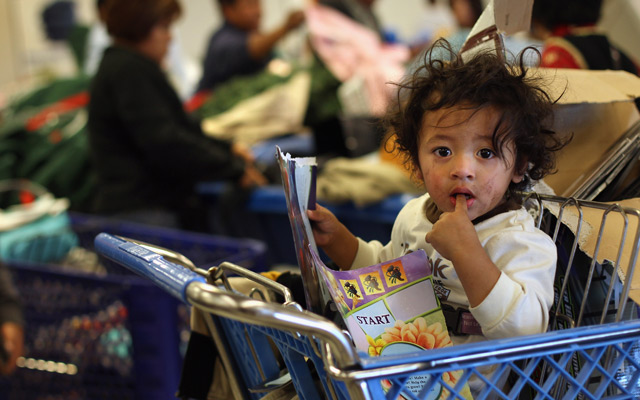Child Poverty and Access to Education: Adding Up the Hidden Costs on the U.S.-Hispanic Community

The Pew Hispanic Center recently published a report on the growing presence of child poverty in the United States. Since 2007, at the onset of the recession that hit this country under the George W. Bush administration, the number of children living in poverty has risen to nearly the highest in history. Moreover, this is the first time that the greatest racial or ethnic population of child poverty is not white. The child poverty rate of the Hispanic population has come to exceed that of both the black and the white populations. In the report, it was recorded that in 2010 over 15.5 million children lived in poverty in America, where poverty is defined as a factor of the size of the family unit and the number of children less than eighteen years of age. For example, if a family of four, with two children under eighteen, has an annual income that is less than USD 22,113, then it would be considered to be “in poverty”. Of those 15.5 million children, 4.4 million (26.6 percent) are black; 5.0 million (30.5 percent) are white; and a record breaking 6.1 million children (37.3 percent) are Hispanic.
According to the United States 2010 Census Report, 16.3 percent of the total population in the U.S. and 23.2 percent of the U.S. population of people less than eighteen years old is Hispanic. The amount of Hispanic children living in poverty is 35.5 percent of the total U.S. population, of which 67.2 percent have parents who immigrated to the U.S. The other 32.8 percent have parents who were born in the U.S.
To assist families with children, and thus aid child poverty, taxpayers can file for the Child Tax Credit, which issues a maximum amount of USD 1000 for each qualifying child under seventeen years of age. The Recovery Act of 2009 has also been instated to counteract the current influx of people living in poverty, with a focus on unemployment assistance, health care, family services, transportation, and other tax credits going to lower income individuals. Despite these efforts to assist low-income taxpayers, child poverty remains a persistent issue.
The economy is perhaps the most pressing issue facing President Obama in his bid for re-election in 2012. The President has put forth an emphasis on health care, social security, and income security. The budget for the 2012 fiscal year allots to these areas 22.62, 20.04, and 14.48 percent of American tax dollars, respectively. The hope is to bolster the economy by lowering the current and future economic burden facing Americans. However, a key, missing element contributing to child poverty remains an issue: education.
While the Hispanic dropout rate of students sixteen to twenty-four years of age (17.6 percent in 2009) has decreased since 2004, it was still over three times higher than the dropout figure for white students (5.2 percent) in the same year. The shortcomings of bilingual and English as a Second Language (ESL) education may partially explain the dropout rates. Students are also forgoing education to help their families’ immediate needs, or to pursue other means to provide them with financial stability. At the same time however, education itself is often vital to achieving economic stability. Statistics have shown that Hispanic families who have at least one parent with a Bachelor’s degree or higher have a significantly lower than average child poverty rate (8.7 percent).
Moreover, while more Hispanics are attending college, funding education still remains a formidable hurdle. If a background of child poverty does not plague college graduates as much as before, then perhaps the most effective way to reduce child poverty is to reform K-12 education, focusing on lowering high school dropout rates while also further supporting the increase of college attendance and graduation rates. The 2012 fiscal year budget only allots 2.77 percent of U.S. taxes to education and job training. Compare that amount to the 19.27 percent given to national defense. Is the United States so insecure that it must prioritize defense and deny education to its citizens? More funding for education will subsequently reduce child poverty. It will increase the number of high school and college graduates, assisting them in finding jobs adequate for financial stability and progress.
Both 2012 Presidential candidates Ron Paul (Texas) and Gary Johnson (New Mexico) deny that the federal government is responsible for providing education. Ron Paul opts for homeschooling and providing a tax credit for homeschooling five times the maximum amount of the Child Tax Credit. Gary Johnson wants to stop funding education completely by eliminating the Department of Education, claiming that the competition will enhance the quality of education. These options would limit Americans to a single choice, private education, restricting it to those that can afford it and isolating those who cannot, leaving behind the majority of the U.S. population. Such a decision would further exasperate the problems of child poverty and curtail opportunities for gaining financial security.
Child poverty and education both continue to be subjects of keen concern among Americans. While there have been attempts to improve the economy, much more can be done to improve the state of child poverty if done at the same time. Child poverty is less severe for families with parents who have graduated college, so the focus needs to be on increasing the number of college graduates and creating jobs for those graduates in this cohort.

